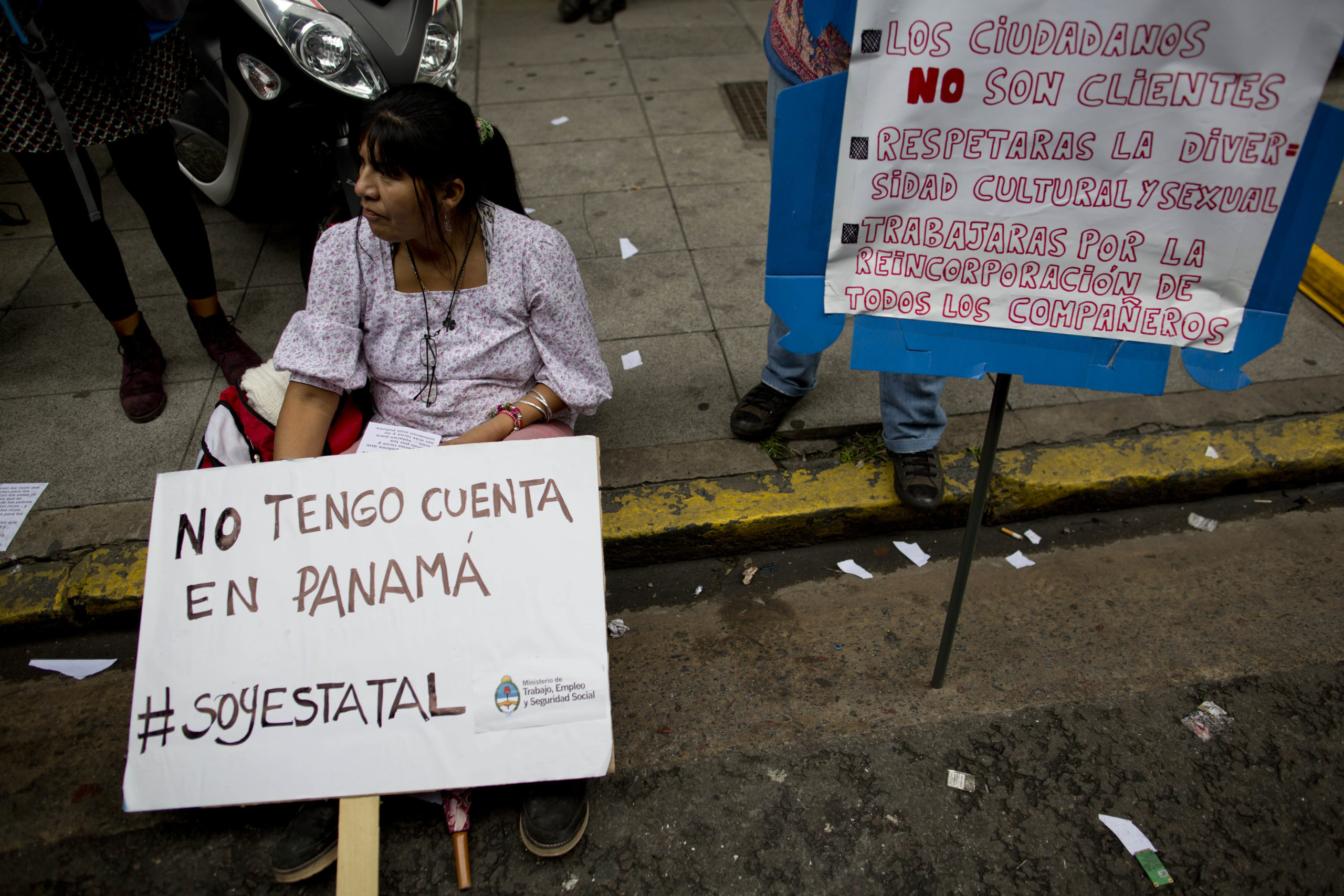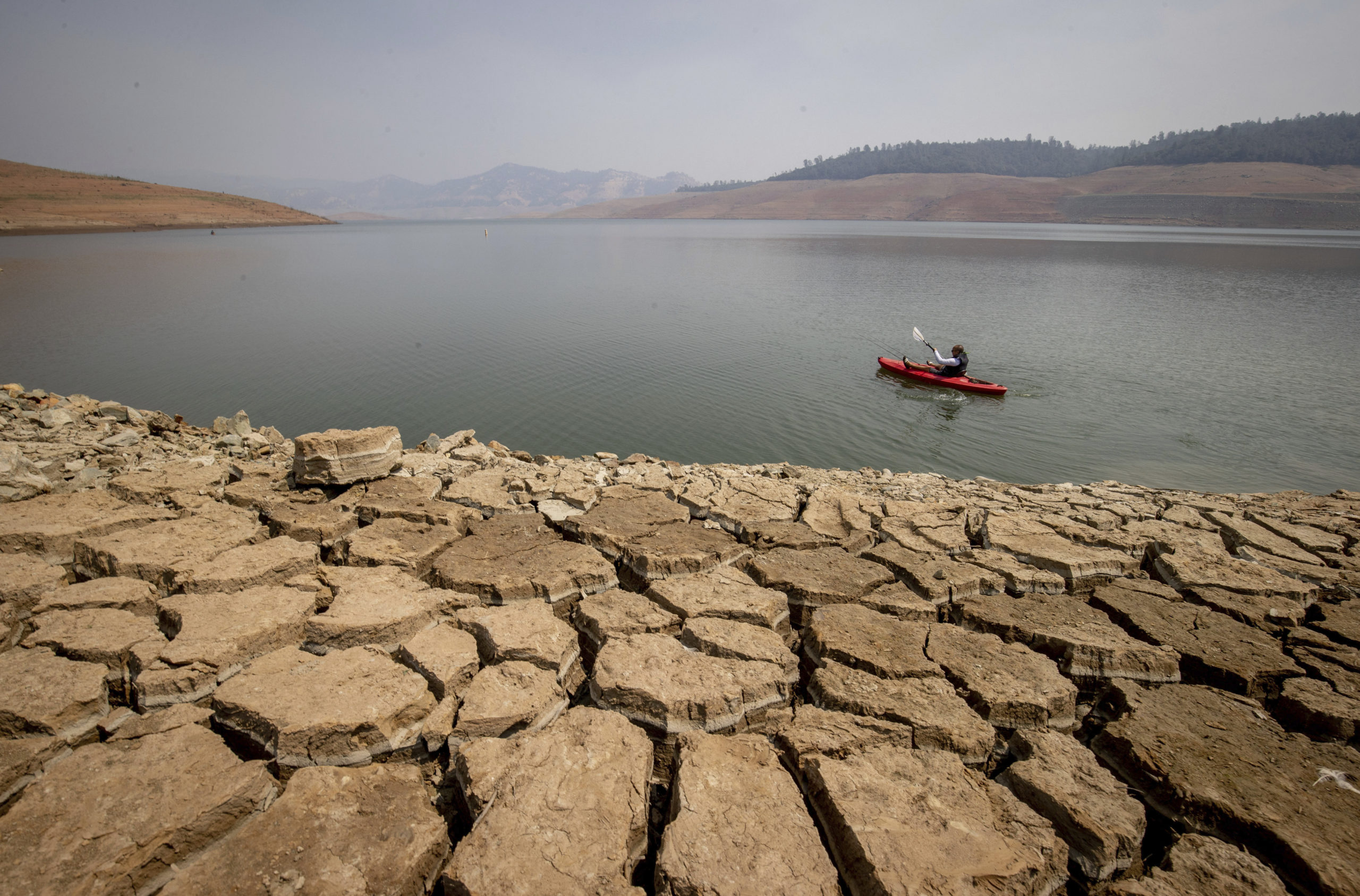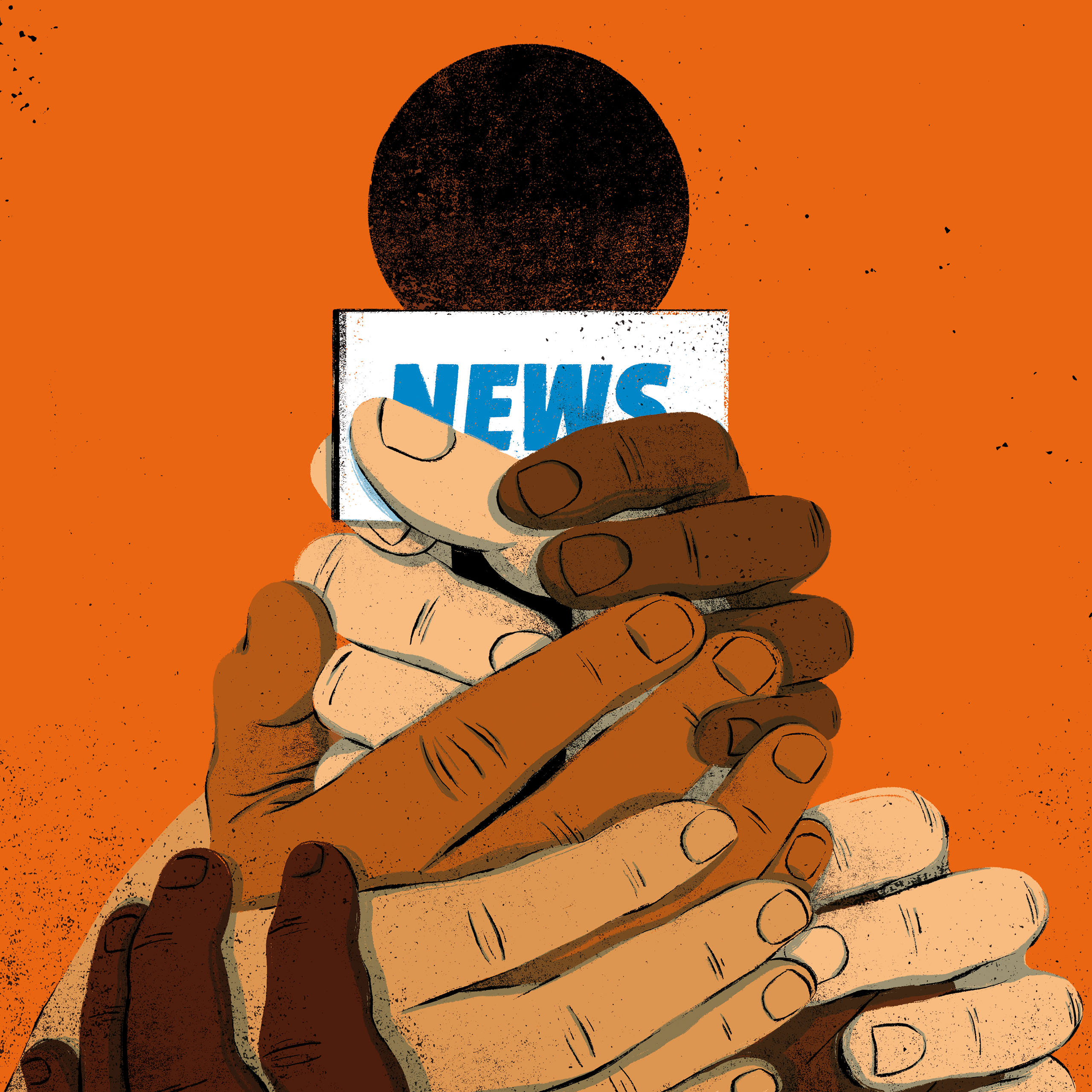When The (Bergen) Record in northern New Jersey began tracking Covid-19 deaths and writing profiles about the deceased in March 2020, the task seemed manageable.
Jim O’Neill, a longtime editor at The Record, handled the project. He combed through obituaries throughout the state, took note of deaths reported by other news outlets, and recorded any names shared by state or health officials. Then he assigned profiles of the deceased to a team of reporters.
But as the death toll across the state surged — nursing home deaths were especially ballooning across the state — O’Neill’s simple spreadsheet was amassing hundreds and hundreds of rows. Hours of his day were being consumed with tracking death. His reporters couldn’t take on many more profiles.
I first heard about the project during a call with The Record’s top editor, Daniel Sforza. I reached out to talk about ideas that my organization, the Center for Cooperative Media at Montclair State University, had about supporting journalists in Jersey during the early days of Covid-19.
“You guys are doing all that yourselves?” I remember asking Sforza. “Do you want help?”
Several weeks later we had a memorandum of understanding, a standalone website, $10,000 in funding from The Nicholson Foundation, a New Jersey-based philanthropic organization, and a dozen other media partners on board as we worked together to shift that project, Loved and Lost, into a statewide journalism collaboration. More partners were added over the next two months.
Such collaborations don’t always come together so easily. But they’ve become very common across the U.S. and around the world.
Since 2017, the center has been tracking collaborative journalism projects as part of a broader program to study and advocate for more partnership in journalism. We have identified more than 40 permanent collaboratives in the U.S. alone, a few of which have become their own non-profit organizations. We have also tracked more than 600 collaborative efforts that range from one-time reporting projects to deep cross-border investigations in a public database.
More than a half-dozen Pulitzers have been awarded to collaborations since 2016. Millions of dollars are flowing in to support collaborative journalism efforts and research from big name foundations including the Knight Foundation, Walton Family Foundation, Chan Zuckerberg Initiative, Bill & Melinda Gates Foundation, Microsoft, and more. Given the financial and political pressures on newsrooms and the multidisciplinary nature of the biggest challenges facing us, collaborations are — and will continue to be — vital to the news industry and civil society.
Here’s a look at why collaborations are important and how to make them work.
What defines a collaboration in journalism can vary widely depending on who you ask. But in a 2017 research paper titled “Comparing Models of Collaborative Journalism,” Sarah Stonbely defined collaborative journalism as “a cooperative arrangement (formal or informal) between two or more news and information organizations, which aims to supplement each organization’s resources and maximize the impact of the content produced.”Stonbely, research director at the center, also noted that “Collaborative journalism is not to be confused with ‘citizen-,’ ‘participatory-,’ ‘engaged-,’ ‘public-,’ or other types of journalism that solicit information from the public or consider interaction with the public a cornerstone practice.”
This definition is expansive in that it includes efforts that others may have long defined as straightforward partnerships — such as common arrangements between local commercial television stations and newspapers where the paper runs the TV station’s weather forecasts, and in turn the TV station uses the paper’s headlines and reporting in its broadcasts. Yet it is narrow in that it focuses entirely on journalist-to-journalist initiatives.

A worker demonstrates outside the Labor Ministry in Buenos Aires, Argentina with a sign that reads in Spanish, "I don't have an account in Panama" in 2016. Her sign is a jab at Argentina's President Mauricio Macri, whose family name was included in documents leaked in the Panama Papers, a collaboration led by the International Consortium of Investigative Journalists that earned them a Pulitzer
Many journalists in the United States might be surprised to learn that collaboration has been part of the fabric of the industry here for more than 175 years. The Associated Press started off as a collaborative effort among a handful of newspapers in New York City and, in many ways, can be considered the global leader when it comes to day-to-day cooperation. As a worldwide network, the AP often collaborates with partners as it did with 17 news organizations on the Facebook Papers investigation and has one of the most sophisticated content-sharing platforms in the world. It has also recently hired multiple people to help run news partnership projects and has landed grant funding to support them.
The current growth of collaborations the news industry in the U.S. is experiencing, however, has roots in two key years: 2009 and 2016. In 2009, Knight Foundation gave $2.4 million for a series of nine collaborations led by J-Lab, an organization dedicated to funding new approaches to journalism; four remained active nearly a decade later. That was also the year that the Corporation for Public Broadcasting began funding journalistic collaborations; since then, it has invested tens of millions of dollars in more than 30 local and regional partnerships. And, 2016 was the year that the groundbreaking Panama Papers was published, led by the International Consortium of Investigative Journalists. ICIJ was later awarded a Pulitzer for that work, which opened many eyes to the power of a cross-border, multi-language collaboration.
“For mission-driven, public service newsrooms, collaborations tick all the most important boxes for participating outlets,” said Bridget Thoreson, member collaborations editor at the Institute for Nonprofit News. “It makes reporting possible by pooling resources and increases the reach and impact of essential journalism. Our participants also appreciate the chance to connect and learn from each other, and as we build out this work, we look forward to working with them to increase revenue and sustainability from their efforts. I expect we’ll continue to see more outlets adopt a collaborative approach as the best practices and benefits are shared across the field.”
Collaborative journalism today is driven by a variety of factors, not the least of which is the seismic shift happening in the business model underpinning most news organizations. Newsrooms are facing resource challenges daily. Around 1,800 have closed since 2004 — more than 100 of which went under during the pandemic. Teaming up with another journalism organization can bring new resources to the table. It can also extend reach and increase impact. If one outlet has an amazing investigative team and another is a leader in podcasts, why not work together on an investigation that could best be told with audio?
Take, for example, Trump, Inc., a collaboration between ProPublica and WNYC Studios that leverages each other’s strengths. ProPublica’s expertise in data and investigative journalism combined with WNYC’s deep knowledge of New York and Donald Trump, and its first-class audio production capabilities, created a comprehensive look at the innerworkings of former president’s business.
There’s also been a critical change in the competitive landscape. When Americans want information, they go to Facebook, Instagram, YouTube, TikTok, Twitter, messaging apps, Google search results, and what their family and friends share. Journalists are competing against all those platforms and their creators for attention — not each other.
“For mission-driven, public service newsrooms, collaborations tick all the most important boxes for participating outlets,” said Bridget Thoreson, member collaborations editor at the Institute for Nonprofit News
Cross-border collaborations are thriving and increasing, especially in parts of Asia. In Asia, collaboration has been driven by a handful of factors, including mis- and disinformation surrounding several recent elections and cross-border work funded by the relatively new Judith Neilson Institute, a non-partisan philanthropic organization that supports journalism around the globe.
While elections are often an easy target for journalistic collaboration, more is being done around topics that affect large portions of the world’s population, including climate change, human rights, misinformation, and democracy.
Covering Climate Now is the most remarkable example to date of global collaboration related to the environment. It includes more than 460 partner outlets — including CBS News, The Times of India, the Ivory Coast Tribune, and Pacnews in Fiji — from around the world who share content and coordinate climate coverage. The topic is global in nature yet affects different parts of the earth wildly differently, making it an excellent candidate for a large cross-border journalism collaboration.
There are many different ways for news organizations to work together. Stonbely’s paper defined six key categories, divided by time and intensity. Collaborations can either be defined as temporary or ongoing, and they can be structured with content being created separately, content being co-created, or deep, multilevel integration.
Covering Climate Now, for example, is an ongoing and separate project. The initiative, co-founded by the Columbia Journalism Review and The Nation, seeks to increase the amount of reporting done around the globe about climate change. Multiple times a year they coordinate coverage around a specific date or event (such as a United Nations meeting related to climate.) While stories are shared between partners, they are typically done by one organization or another. A frequent contributor is The Guardian, for example, which has the resources to do impactful climate coverage that is then picked up by other partners in the network.
A recent temporary and separate project is Tapped Out, an effort led by the Institute for Nonprofit News. Eight newsrooms — California Health Report, High Country News, SJV Water, the Center for Collaborative Investigative Journalism, Circle of Blue, Columbia Insight, Ensia, and New Mexico In Depth — spent more than three months reporting on water issues in the western United States. All published their articles in May 2021. A grant from The Water Desk, a program designed to promote environmental journalism at the University of Colorado Boulder, along with INN sourcing participants from its network helped make the project possible.
A great example of a temporary and fully integrated project is the Pandora Papers, currently the largest investigative journalism collaboration on record. The Pandora Papers was led by the International Consortium of Investigative Journalists and involved more than 600 journalists in 117 countries and territories over the course of almost two years. The work was based on a massive leak of tax files, including 11.9 million financial and legal records containing 2.94 terabytes of confidential information from 14 offshore service providers. In collaborations like this, ICIJ typically takes the lead in cleaning and preparing the data, gathering journalistic partners, and coordinating coverage.
Highly coordinated projects like the Pandora Papers — which published hundreds of investigative stories — can have far reaching impact around the world. In the Czech Republic, the billionaire prime minister, Andrej Babis, seemed on track to win another term in the fall of 2021 before the Pandora Papers revealed that he “used shell companies in tax havens to buy a chateau on the French Riviera. He did not disclose the chateau or companies, as required by Czech law.” Babis was ousted after his party lost the majority in Parliament in October. Not long after the stories were published, at least 19 investigations were launched by the European Parliament, Europol, and 15 countries, according to the ICIJ.
Tracking impact is critical for collaborations of all sizes. The Organized Crime and Corruption Reporting Project updates its “Impact to Date” page quarterly, and since 2011 has counted $7.4 billion in monies seized or fines levied because of its collaborative reporting, along with 571 arrests, indictments, or sentences. The Institute for Nonprofit News publishes impact reports publicly for every collaboration it leads, tracking both reach and any outcomes its partners’ reporting had.While most journalists measure their impact in terms of legislative or judicial wins, there’s also something to be said for how collaborative work impacts audiences. Research out of France’s CrossCheck project a few years ago showed that its audience trusted the information it was receiving more because it came from a consortium of news outlets rather than a single entity. This was in part because news organizations on opposite ends of the political spectrum all worked together.

A kayaker paddles in Lake Oroville as water levels remain low due to continuing drought conditions in Oroville, Calif., on Aug. 22, 2021. The collaboration Tapped Out, led by the Institute for Nonprofit News, spent more than three months reporting on water issues in the western United States
Deciding what impact to focus on, how to measure it, and who gets credit can be one of the trickier aspects of working with other journalists. Indeed, there are a lot of small details — such as agreeing on deadlines, the order of bylines, and whose site the work will appear on first — involved in collaboration with outside parties that can complicate the process. When a collaboration fails, it’s often due to personality conflicts, editing disagreements, a lack of buy-in, technology that isn’t compatible, or the lack of a clear plan to begin with.
That last one — a clear plan — is a critical step for any organization seeking to join a collaboration, especially if it’s new territory. Questions that could have been easy to resolve at the beginning become behemoths that block progress: Are we publishing all of our stories at the same time on the same date? Will the stories be linked from one main location? How will we track traffic? Who will own the database we built together? If we apply for an award, whose name will go on the submission?
To address these issues, many collaborations create shared memos, legal documents, or at least an outline of who’s doing what and how it will work.
Liza Gross is vice president of practice change at Solutions Journalism Network and a leader in collaborative journalism in the U.S. Through the Local Media Project funded by Knight Foundation and the Ralph C. Wilson Jr. Foundation, Gross has launched 14 collaboratives in cities and states across the country, including Philadelphia, Charlotte, N.C., New Hampshire, Northeast Ohio, Dallas, Sacramento and more.
These collaborations are a model for the future — and a path forward for news organizations that want to do ambitious journalism but don’t have the resources to support that work
Her process to establish new collaboratives is methodical, requiring quite a bit of work upfront, including a thorough memorandum of understanding signed by all participating parties. “A significant level of commitment on the part of participating organizations is required,” she wrote in a piece for Knight Foundation titled “Collaboratives: You have to want to be there.”
“Journalists are action-oriented. Our first impulse is to throw ourselves into the fray. Let’s all rush out and produce stories and then we will figure out how all this works,” Gross says. “The key to a successful collaborative is to do exactly the opposite. Leaning into difficult conversations, hammering out an MOU around common values and purpose, designing clear processes, and assigning responsibilities can seem overwhelming, tedious, and may take months of meeting and arguing. But this initial prep work is crucial to ensure the long-term health of a collaborative arrangement, and it must happen before the boat pushes off the dock.”
Not only can that work pay off in terms of great impact, as noted above, but also in terms of awards. In addition to several collaborations being named Pulitzer winners over the last six years, award categories specifically for collaborative journalism have been added recently to the Online Journalism Awards, Nonprofit News Awards, and LION’s Local Journalism Awards.
In 2022, journalistic collaboratives are becoming more sophisticated, diverse, and common. They’ve also evolved beyond editorial only. Collaboratives including Solving for Chicago, Oklahoma Media Center, and the Chicago Independent Media Alliance have shared revenue components including joint fundraising campaigns and shared advertising. More collaboratives that were set up as ongoing efforts are transitioning into standalone entities such as Resolve Philly. And there is growing evidence of the power of collaborations involving journalists and civil society organizations, explored in a recent paper by Stonbley and Hanna Siemaszko, a research assistant at the Center for Cooperative Media, titled “Cross-field collaboration: How and why journalists and civil society organizations around the world are working together.” In one example from that report, The Azerbaijani Laundromat investigation, journalists from the Danish newspaper Berlingske, The Guardian, Le Monde, Novaya Gazeta, and other news organizations — working in collaboration with global advocacy group Transparency International — uncovered a $2.9 billion slush fund being used to bribe politicians and purchase expensive items. Once the reporting was published, Transparency International stepped up its push for accountability by coordinating a letter writing campaign aimed at the Parliamentary Assembly of the Council of Europe demanding investigations of people involved in the money laundering scheme in multiple countries.
As news organizations experiment with different types of collaborations — financial, editorial, temporary, and permanent — it’s not just that the possibilities for providing better journalism for our audiences increase. Or that powerful entities will be held to account. These collaborations are a model for the future — and a path forward for news organizations that want to do ambitious journalism but don’t have the resources to support that work.



